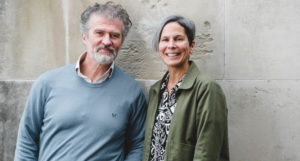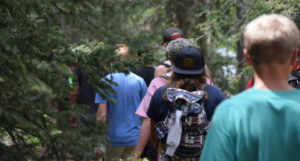New study challenges common perceptions of Victorian register office weddings

Professor Rebecca Probert, from the University of Exeter Law School, analysed information about 286 register office weddings celebrated between 1837 and 1901
Register office weddings were more popular with older couples rather than runaway teenagers when introduced by the Victorians, new analysis shows.
More than a million couples chose to avoid a church for their wedding in favour of a register office following the Marriage Act 1836 until the death of Queen Victoria.
Some couples chose to marry in a register office because they had something to hide. Others did so because of practical considerations of location, cost, and speed.
Professor Rebecca Probert, from the University of Exeter Law School, analysed information about 286 register office weddings celebrated between 1837 and 1901, with examples from 40 counties and 151 different registration districts.
Older couples were overrepresented, and many of these were remarriages having first had a ceremony in a church. Brides and grooms marrying in the register office were twice as likely to be in their 40s and older.
In 2020 Professor Probert put out a call via the Lost Cousins network of family historians and societies interested in family history inviting family historians whose ancestors had married in ‘a civil ceremony’ to provide information. A total of 184 got in touch and between them provided information about 1,132 weddings celebrated between 1837 and 2017.
According to the national figures, in 1901 4.9 per cent of marriages were recorded as involving a groom in their 40s, and 3.5 per cent as involving one aged 50 or over. For brides, the percentages were even lower, with 3.6 per cent of marriages recorded as involving a bride in her 40s, and just 1.6 per cent involving one aged 50 or over. Within the sample exampled by Professor Probert 9.8 per cent of grooms were recorded as being in their 40s, and 7.3 per cent as over 50; similarly, 6.6 per cent of brides were recorded as being in their 40s and 3.7 per cent as over 50.
During the Victorian era 16.7 per cent of all marriages were stated to be remarriages for one or both of the parties. By contrast, 25 per cent of the register office sample were stated to be widow(ers) or (more rarely) divorce(e)s.
Professor Probert also found impediments for 24 marriages, or 8.4 per cent. Three men married a daughter or niece of their deceased wife, while one woman married her deceased husband’s brother, and seven men married their deceased wife’s sister. The other 13 cases involved an existing spouse.
In other cases individuals seem to have given false details. Within the sample, 6.2 per cent of grooms and 8.9 per cent of brides are known to have adjusted their ages (sometimes upwards, sometimes downwards). There were also 15 marriages in the sample (around 5.2 per cent of the sample) in which there was an age gap of 20 years or more between the bride and groom. In one case where the bride was 33 years older than the groom, her given age was recorded as 50 rather than the actual 62, while he claimed to be 30 rather than 29.
Within the register office sample, at least 14.7 per cent of brides were pregnant, many of whom would have been very visibly pregnant at the time of the wedding.
Increasing urbanisation may also have played a role in the increase in register office weddings, for those who were living far away from their family or who did not have a deep connection with their new parish church.
Professor Probert said: “There’s no simple answer to the question of who married in a register office in Victorian England. Individuals often made different choices at different stages in their lives. Working with family historians is a great way of building up a picture of what happened in practice.”



